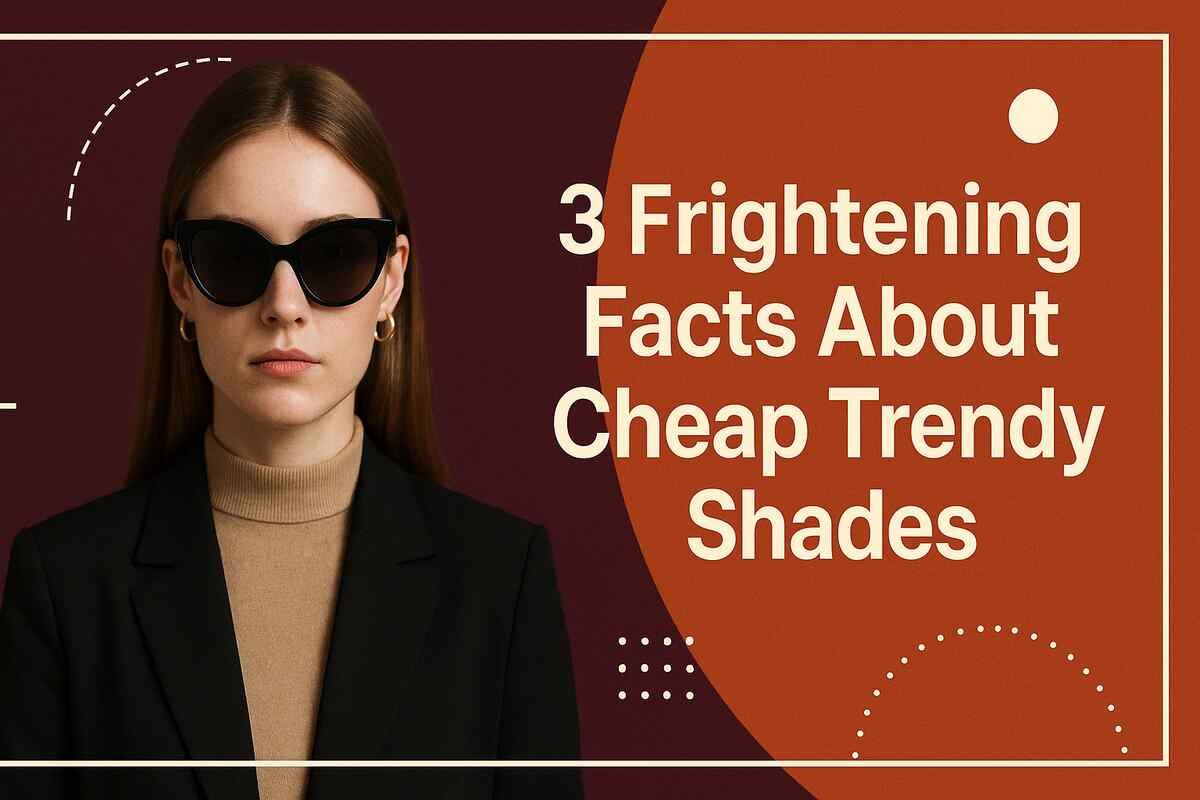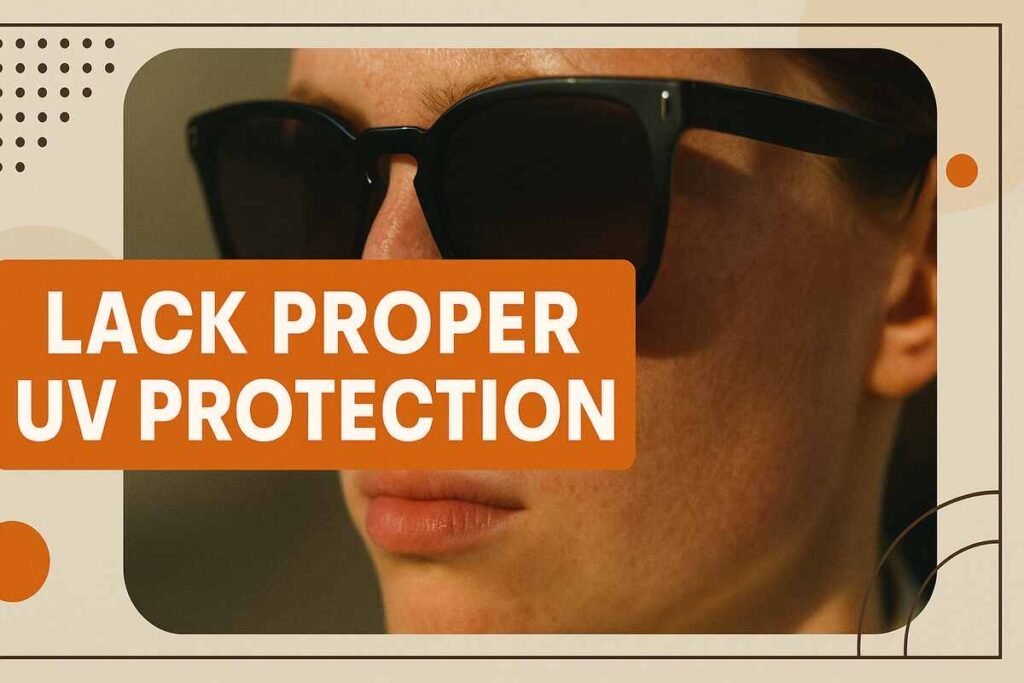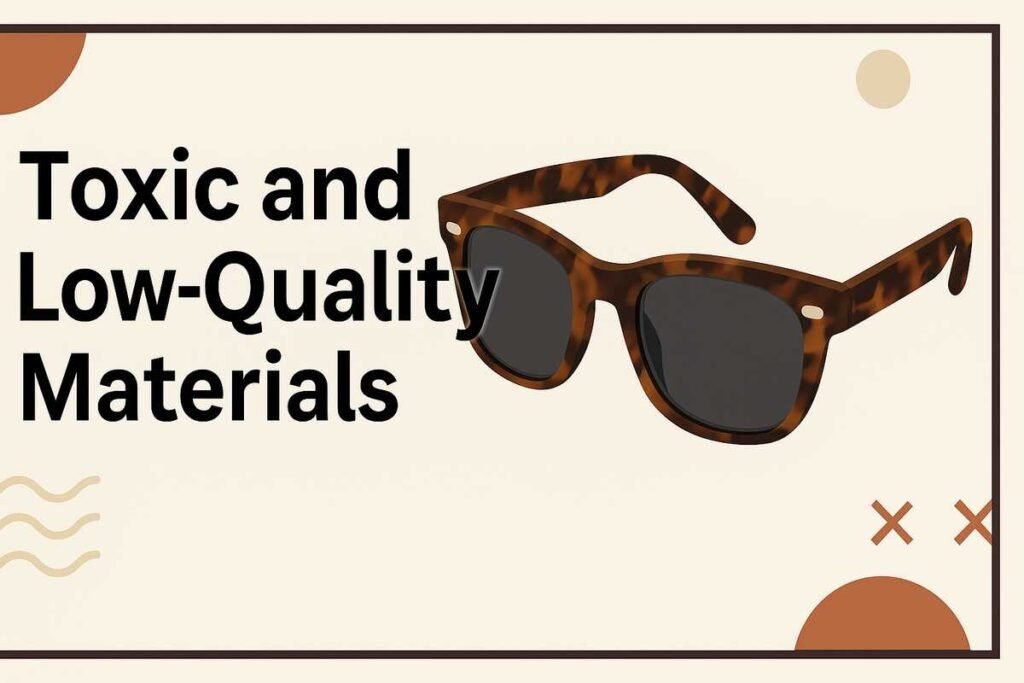Physical Address
304 North Cardinal St.
Dorchester Center, MA 02124
Physical Address
304 North Cardinal St.
Dorchester Center, MA 02124

Introduction
Trendy sunglasses are everywhere—displayed on corner racks, online flash sales, and even tucked beside convenience store counters. The appeal is clear: they’re stylish, cheap, and easily replaceable. But behind the appealing price tags and seasonal designs lies a hidden cost that most consumers overlook.
In this article, we reveal 3 frightening facts about cheap trendy shades that could be costing you more than just fashion points. From lack of UV protection to hazardous materials and durability issues, these facts may make you think twice before choosing price over quality.
Cheap sunglasses often promise quick style fixes but deliver long-term problems. As The Vision Council notes, the primary purpose of sunglasses is to protect your eyes—not just enhance your outfit. Unfortunately, many fast-fashion shades fail to meet basic safety and durability standards.
Learning these key truths can help you avoid vision issues, environmental harm, and wasted money. Let’s break them down.

The most terrifying issue with budget sunglasses? Many don’t block harmful UV rays at all.
Why It’s Frightening:
How to Spot the Danger:
Scientific Warning: The American Academy of Ophthalmology warns that sunglasses without proper UV filtration can be more damaging than wearing none at all.
Solution: Invest in certified UV-protected eyewear. Even affordable brands like Warby Parker and Sunski offer stylish, budget-conscious options with verified protection.

Cheap sunglasses may feel light and comfortable—but at what cost? Many are made from subpar materials that may pose health or environmental risks.
Why It’s Frightening:
Eco & Health Risk: A Greenpeace report on fast fashion accessories revealed that many low-cost plastic accessories, including eyewear, often include harmful chemicals that wouldn’t pass stricter EU standards.
How to Stay Safe:
Bonus Tip: Sustainable sunglasses aren’t just a trend—they’re a responsibility. Brands like Pala and Zeal Optics offer eco-friendly frames with proper certifications.

That low price tag comes with a high turnover rate. Most cheap sunglasses are designed to last a few months—if that.
Why It’s Frightening:
Environmental Impact: According to Earth911, most low-grade eyewear ends up in landfills because they’re not made with recyclable materials or built for repair.
Costly Reality: Replacing sunglasses every season quickly adds up. Spending $15 every two months equals $90 per year—more than a single pair of high-quality shades.
Sustainable Solution:
It’s easy to fall for the appeal of cheap trendy shades—they’re accessible, fun, and seem like a good deal. But as these 3 frightening facts reveal, what you save upfront may cost you far more in the long run—in health risks, environmental damage, and recurring purchases.
Choose sunglasses that combine fashion with function. Look for verified UV protection, quality materials, and long-term wearability. Your eyes, your wallet, and the planet will thank you.
Smart style is sustainable style. Ditch the disposable trends and invest in protection that truly performs.
I find myself at a loss for words to describe how deeply this resonated with me. It’s not every day that a piece of writing moves beyond the surface to touch something profound and unspoken. You’ve managed to do exactly that — to reach beyond the usual layers of thought and offer something that feels real, true, and deeply meaningful.